Winter can be a challenging season for gardeners, especially when it comes to maintaining greenery indoors. However, growing herbs indoors during the colder months not only brings a touch of freshness into our homes but also provides numerous benefits.
From enhancing the flavor of winter dishes to improving indoor air quality, the right herbs can make a significant difference. In this blog post, I will guide you through the best herbs to grow indoors during winter, along with essential tips for nurturing them throughout the season.
Whether you’re a seasoned gardener looking to extend your growing season or a beginner wanting to introduce a bit of greenery indoors, this guide will equip you with the knowledge and confidence to thrive in winter gardening. Let’s explore the world of winter herbs, ensuring your indoor garden remains vibrant and productive even when the outdoor landscape is bleak.
Understanding Winter Gardening
Challenges of Winter Gardening:
Gardening in winter presents distinct challenges due to shorter daylight hours, colder temperatures, and reduced sunlight. These conditions can severely impact the growth of most plants, making it difficult for them to thrive indoors.
The lack of natural light and the chill in the air mean that traditional garden plants might struggle to survive in these conditions. However, by focusing on indoor herbs, you can work around these challenges and still enjoy fresh, vibrant greenery throughout the winter months.
Importance of Indoor Herbs in Winter:
Choosing the right herbs to grow indoors during winter is not just about adding greenery to your space; it’s about practical benefits too. Indoor herbs such as parsley, thyme, and mint can thrive in indoor conditions and offer several advantages:
- Adds greenery to indoor spaces: Fresh herbs not only brighten up your living environment but also bring a touch of nature into your home.
- Provides fresh herbs for cooking: Growing herbs like basil, rosemary, and oregano indoors means you have easy access to fresh ingredients for cooking, even in the dead of winter.
- Improves air quality in the home: Certain herbs are known for their air-purifying qualities, helping to reduce indoor pollutants and improve the overall air quality in your home. By nurturing these herbs indoors, you’re not just gardening—you’re creating a healthier living environment.
Best Herbs for Winter
Parsley
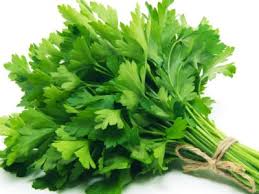
- Benefits during Winter: Parsley is a hardy herb that thrives indoors during the winter months. It adds a fresh, vibrant touch to dishes and is a rich source of vitamins A, C, and K. Its mild flavor complements a wide range of recipes, making it a versatile addition to any indoor herb garden.
- Tips for Growing Parsley Indoors:
- Light: Parsley prefers bright, indirect light. Place it near a sunny window, but avoid direct sunlight as it can scorch the leaves.
- Temperature: Keep the temperature around 65-70°F (18-21°C) for optimal growth. Avoid placing it near cold drafts or heat sources.
- Watering: Water consistently but avoid waterlogged soil. Allow the top inch of soil to dry out before watering again to prevent root rot. Use room temperature water to keep the soil consistently moist but not soggy.
Thyme
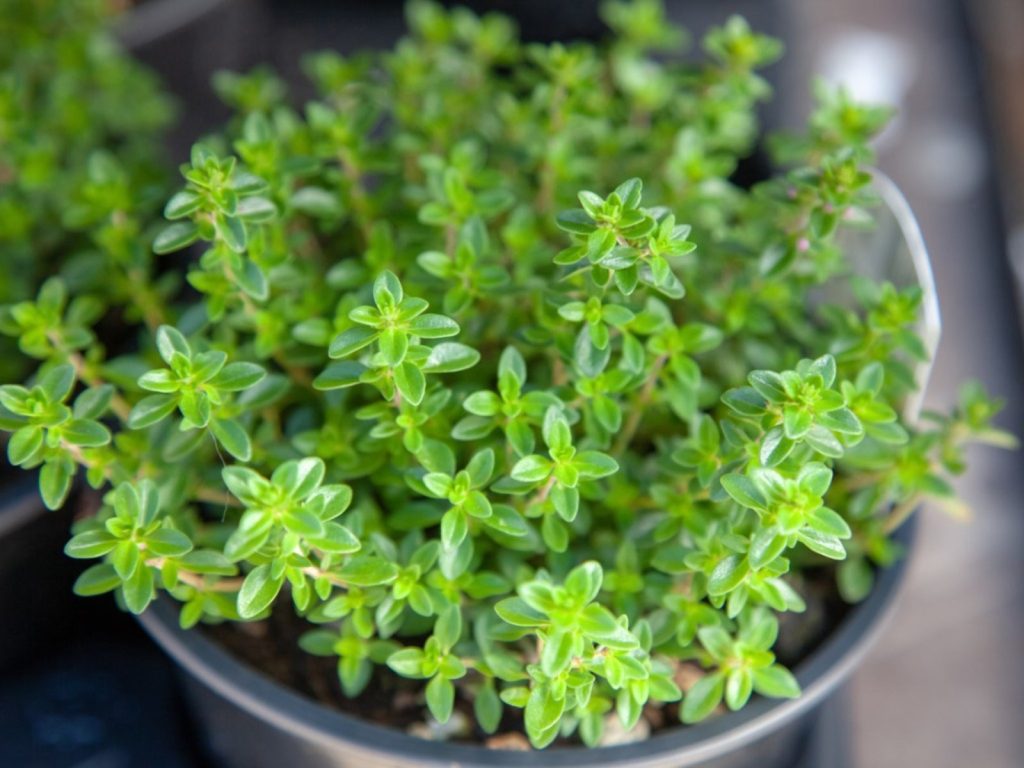
- Benefits and Uses in Winter: Thyme is another herb that thrives indoors during winter. It has a strong, earthy flavor and is an excellent addition to hearty winter dishes like stews and roasted meats. Thyme is also known for its antimicrobial properties.
- Indoor Growing Tips:
- Light: Thyme requires plenty of sunlight. Place it in a sunny window where it can receive 6-8 hours of direct sunlight daily. If natural light is insufficient, use a grow light to supplement.
- Temperature: Ideal temperature for thyme is between 60-70°F (15-21°C). Protect it from sudden temperature fluctuations and drafts.
- Preventing Damping-Off Disease: Damping-off can be a common issue for thyme seedlings. To prevent this, use a well-draining soil mix, ensure good air circulation around the plants, and avoid overwatering.
Mint

- Advantages of Growing Mint Indoors: Mint is a vigorous herb that thrives in indoor conditions, especially during winter. It’s refreshing and can be used fresh in teas, salads, and desserts. Mint helps with digestion and adds a cooling flavor to dishes.
- How to Control Its Spread:
- Mint can be invasive if not managed properly. Grow it in containers to keep its roots contained, which helps control its spread.
- Place mint in a pot with drainage holes and keep it in a sunny spot where it can get at least 4-6 hours of sunlight each day.
- Tips for Maintaining Healthy Mint Plants in Winter:
- Water mint regularly, keeping the soil consistently moist but not waterlogged. Mint prefers slightly cooler temperatures around 50-60°F (10-15°C).
- Trim the plant regularly to encourage bushier growth and prevent it from becoming leggy. Harvest leaves as needed to maintain vigorous growth.
Oregano
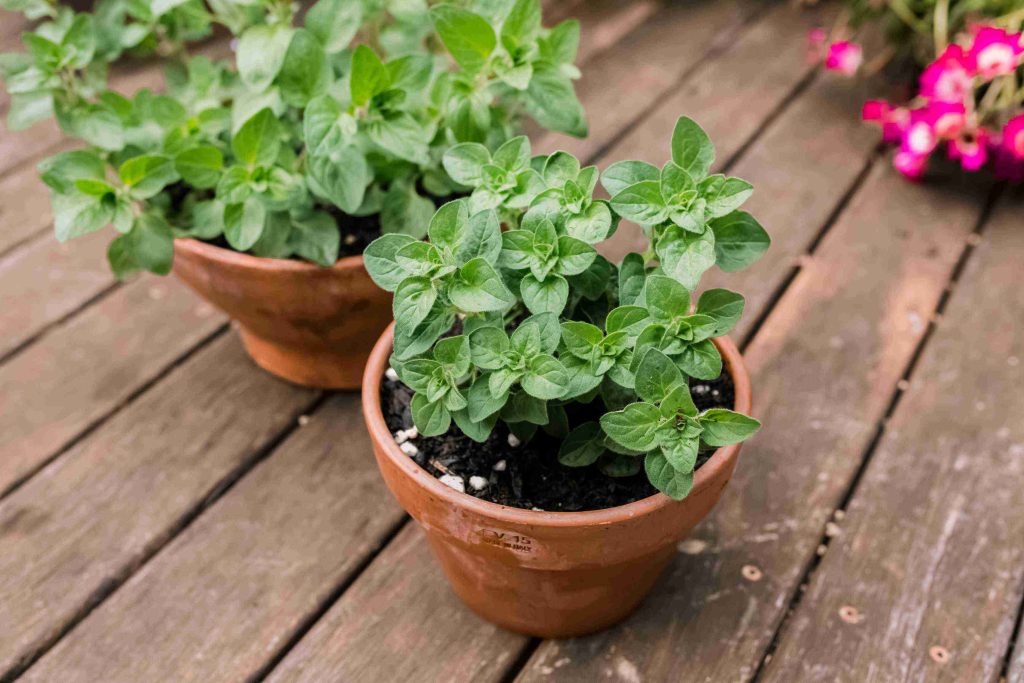
- Benefits for Cooking in Winter: Oregano is a must-have herb for winter cooking. It adds a robust, earthy flavor to dishes like pizza, pasta sauces, and marinades. Oregano is rich in antioxidants and has antimicrobial properties.
- Growing Tips and Care:
- Light: Oregano thrives in full sun. Ensure it receives at least 6-8 hours of sunlight daily. If natural light is not sufficient, use a grow light.
- Temperature: Maintain a temperature range of 60-70°F (15-21°C). Oregano does not tolerate extreme cold or heat, so keep it away from drafts and heating vents.
- Harvesting and Storing Oregano Leaves:
- Harvest leaves before the plant flowers for the best flavor. Cut stems just above a leaf pair to encourage new growth.
- Oregano can be dried and stored in airtight containers for later use. You can also freeze fresh leaves or chop them and mix with olive oil for a flavorful herb spread.
Selecting the Right Herbs for Your Space
When selecting herbs for your indoor garden during winter, several factors should guide your decision to ensure the best growth and use:
- Space Availability:
- Windowsill: Ideal for placing compact herbs like thyme, parsley, and mint. These herbs don’t require much room and can thrive in the light available from a sunny window.
- Countertop: Larger herbs such as basil and rosemary can also do well on a countertop where they have enough space to grow. These herbs require a bit more room due to their size.
- Light Requirements:
- Choose herbs based on their light needs. For instance, parsley, thyme, and mint prefer bright, indirect light. Place them near a window that receives at least 4-6 hours of sunlight each day. If sunlight is limited, supplement with a grow light to provide the necessary light spectrum for photosynthesis.
- Personal Culinary Preferences:
- Select herbs based on your cooking habits. If you frequently use Italian dishes, oregano and basil would be good choices. For those who enjoy Middle Eastern or Indian dishes, mint and cilantro may be more suitable.
Herbs Suitable for Small Spaces:
- Compact Herbs:
- Herbs like thyme, parsley, and mint are ideal for small spaces due to their compact growth habits. They can easily fit on a windowsill or a small countertop garden.
- Tips for Maximizing Space:
- Vertical Gardening: Utilize hanging planters, tiered shelving, or wall-mounted pots to grow herbs vertically. This not only saves space but also adds a decorative element to your indoor garden.
- Space-Saving Containers: Opt for small, shallow pots or containers to maximize growing space without sacrificing the plant’s health. Herbs like thyme and mint can be grown in small pots side by side, which also makes them easier to water and manage.
Low-Light Herbs:
- Choosing Herbs for Low Light:
- Some herbs are more adaptable to low-light conditions than others. Mint and oregano are particularly well-suited for such environments. They can tolerate lower light levels and still produce healthy leaves.
- Tips for Growing Low-Light Herbs:
- Place these herbs in areas with consistent, indirect light, such as a north-facing window. Use a grow light to supplement light in darker areas, ensuring they receive at least 12-14 hours of light per day.
- Rotate plants regularly to ensure all sides get adequate light, which helps prevent them from becoming leggy and sprawling.
By carefully considering these factors—space availability, light requirements, and personal preferences—you can select the right herbs for your indoor garden that will thrive through the winter months.
Indoor Growing Tips for Winter Herbs
Optimal Light Conditions
- How to Simulate Natural Sunlight Indoors:
- During winter, natural sunlight can be limited, so it’s crucial to simulate it indoors. Place your herbs near a south-facing window, where they can receive at least 4-6 hours of direct sunlight daily. If natural light is insufficient, use a grow light. LED grow lights are particularly effective for indoor gardening as they provide the necessary light spectrum (blue and red light) that promotes healthy plant growth. Position the grow light about 6-12 inches above the plants, depending on their size, and leave it on for 12-14 hours a day to mimic daylight hours.
- Using Grow Lights if Necessary:
- If you notice your herbs stretching or becoming leggy, it’s a sign they are not getting enough light. In such cases, using a grow light is essential. Ensure the light is the correct distance from the plants to prevent light burn, and consider a timer to automate the light cycle for convenience.
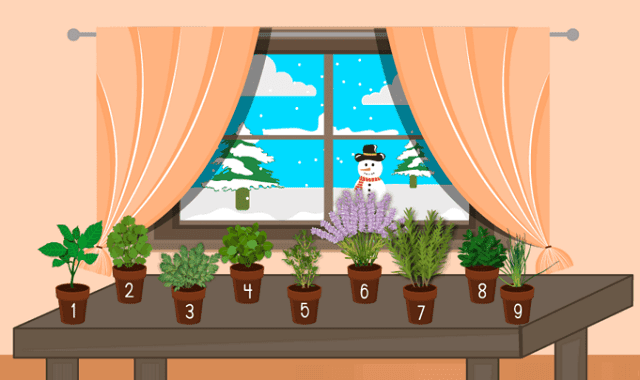
Temperature Control
- Maintaining the Right Temperature Indoors:
- Most winter herbs prefer temperatures between 60-70°F (15-21°C). Keep them away from drafts and heating vents, which can cause rapid temperature fluctuations and stress the plants. A consistent, moderate temperature is key to their health.
- Avoiding Drafts and Sudden Temperature Changes:
- Place your herbs away from windows or doors that frequently open and close, which can lead to cold drafts. Keep them away from radiators and heating vents to prevent the soil from drying out too quickly and to maintain stable humidity levels.
Watering Guidelines
- How Often to Water in Winter:
- During winter, the growth rate of indoor herbs slows due to reduced light and cooler temperatures, so they require less water. Water your herbs when the top inch of soil feels dry. As a general rule, water thoroughly but infrequently.
- Methods to Prevent Overwatering:
- Overwatering is a common issue in winter, leading to root rot. Use a well-draining soil mix to prevent waterlogged conditions. To check soil moisture, insert your finger into the soil up to the first knuckle; if it feels dry, it’s time to water. Water directly onto the soil, avoiding the leaves, and ensure excess water drains out of the bottom of the pot. Empty any standing water from the saucer beneath the pot to prevent the roots from sitting in water.
Humidity Management
- Creating a Humid Environment for Herbs:
- Indoor air can be dry during winter due to heating. Herbs like parsley, thyme, and mint thrive in slightly higher humidity. Increase the humidity around your plants to replicate their natural environment.
- How to Use a Humidifier or Tray of Water Nearby:
- Use a humidifier in the room where your herbs are located to maintain humidity levels between 40-60%. Alternatively, place a shallow tray filled with water near the plants. The water will gradually evaporate, increasing the local humidity and benefiting the herbs. Grouping plants together also helps retain moisture, as the plants’ leaves can create a microclimate with higher humidity levels.
Common Issues and Solutions
Pests and Diseases in Winter
- Identifying Common Pests Like Spider Mites and Aphids:
- Spider Mites: These tiny pests are a common problem during winter. They are hard to spot but can cause yellowing leaves and webbing on the plant. To identify them, examine the undersides of leaves for small specks or fine webbing.
- Aphids: These pests can also affect indoor herbs, especially during the colder months. Look for small, soft-bodied insects clustering on new growth or the undersides of leaves. They can cause distortion and yellowing of leaves.
- Natural Remedies and Treatments:
- Spider Mites: Use a strong spray of water to dislodge them from the plant. You can also mix a mild soap solution with water and spray it on the affected leaves. Neem oil is another effective natural remedy; dilute it with water and apply it to the plant to repel and kill mites.
- Aphids: Wipe the affected leaves with a damp cloth to remove aphids manually. A strong stream of water can also help wash them away. For a more organic solution, mix a few drops of dish soap in water and spray it on the leaves. Ladybugs and predatory insects like lacewings can be introduced to your indoor garden as they naturally prey on aphids.
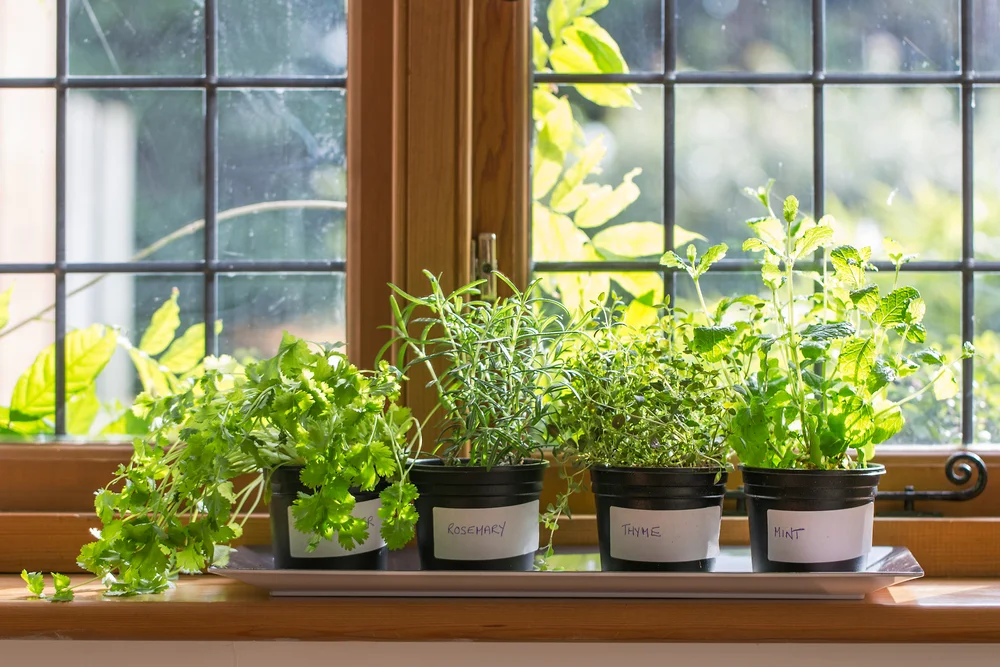
Yellowing Leaves
- Causes and Solutions for Yellowing Leaves in Winter:
- Nutrient Deficiency: Inadequate light and cooler temperatures in winter can prevent plants from absorbing nutrients efficiently. Ensure your plants receive proper nutrients by feeding them with a balanced liquid fertilizer every 4-6 weeks during the winter months.
- Watering Issues: Overwatering or underwatering can lead to yellow leaves. Check soil moisture regularly and maintain a consistent watering schedule. Water when the top inch of soil is dry, and avoid letting the plant sit in water.
- Low Light: Insufficient light can cause chlorophyll to break down, leading to yellow leaves. Increase light exposure through a grow light if natural light is insufficient. Rotate the plants periodically to ensure even light distribution.
Leggy Growth
- Why Herbs Grow Leggy in Winter:
- Lack of Light: Low light levels during winter can cause plants to grow taller and thinner (leggy) as they stretch towards the light source. This is a common issue for many indoor herbs.
- How to Prevent and Fix It:
- Provide Adequate Light: Ensure your herbs receive 4-6 hours of direct sunlight daily or supplement with a grow light. Position the grow light close to the plants to avoid excessive stretching.
- Pruning: Regularly pinch back leggy growth to encourage bushier, more compact growth. Trim the top few inches of the plant to promote lateral branching. This not only helps the plant maintain a fuller shape but also improves air circulation around the foliage, which can prevent other issues like mold and mildew.
- Use Reflective Surfaces: To maximize available light, use reflective surfaces like aluminum foil or white-painted walls around the plants. These surfaces bounce light back onto the plants, making the most of the light they receive.
Addressing these common issues early and applying appropriate solutions can help maintain the health and vitality of your winter herbs. By staying vigilant and responsive to the needs of your plants, you can enjoy a lush, green indoor garden all winter long.
Winter doesn’t have to mean the end of your indoor gardening dreams. By understanding the specific needs of winter herbs, providing the right light, temperature, and humidity, and addressing common issues like pests and yellowing leaves, you can maintain a healthy and productive indoor garden.
With the tips and strategies outlined in this guide, you’re now equipped to grow vibrant, fresh herbs throughout the winter months. Embrace the challenge and enjoy the rewards of a green and fragrant indoor oasis. Happy gardening!

